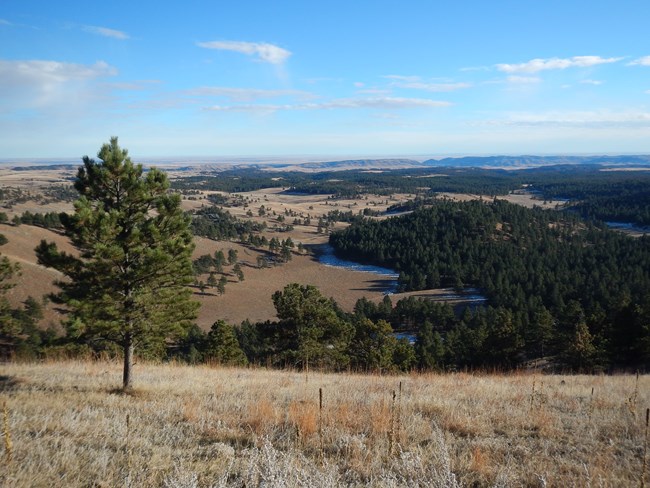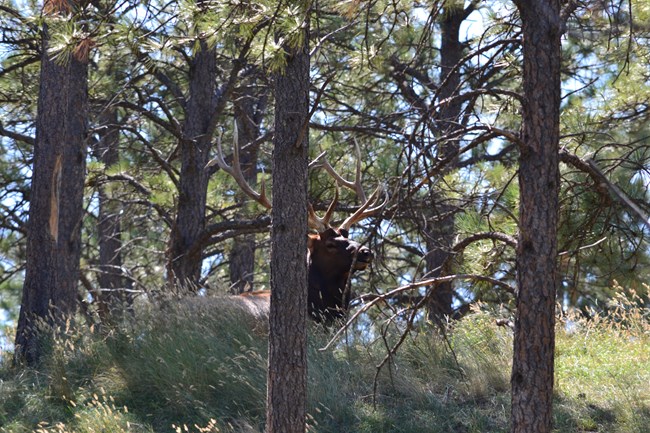
NPS photo
The term "Black Hills" is a translation from the Lakota term Pahá Sápa. They are named so because when they are viewed from a distance, the hills appear very dark compared with the surrounding plains.

NPS photo Wind Cave National Park occupies the southeastern edge of the Black Hills. It is home to to both prairie and forest environments. While much of the park is open prairie with sparse woody vegetation, these stands of ponderosa pine cover the topographically higher portions of the park. Black Hills forests are dominated by ponderosa pine. The ponderosa is common to much of western North America, and the Black Hills represent some of their easternmost range. As a drought-tolerant species, it is well-adapted to life in the Black Hills, where rain may abundantly fall some years, but be very absent in other years. 
NPS Photo The diversity of land cover in the park provides prime habaitat for many animals in the park. Where the forest meets the prairie is called an ecotone, the blending of two habitat types. Animals are often seen along the ecotone, taking advantage of the covered forest and open prairie. Fire In The Forest
Left image
Right image
Learn more from other parks... |
Last updated: July 30, 2024
